Refine search
Actions for selected content:
13588 results in History of science and technology
Editorial
-
- Journal:
- Science in Context / Volume 22 / Issue 4 / December 2009
- Published online by Cambridge University Press:
- 09 November 2009, p. 533
- Print publication:
- December 2009
-
- Article
-
- You have access
- HTML
- Export citation
SIC volume 22 issue 4 Cover and Front matter
-
- Journal:
- Science in Context / Volume 22 / Issue 4 / December 2009
- Published online by Cambridge University Press:
- 09 November 2009, pp. f1-f3
- Print publication:
- December 2009
-
- Article
-
- You have access
- Export citation
Inquiring into Communication in Science: Alternative Approaches
-
- Journal:
- Science in Context / Volume 22 / Issue 4 / December 2009
- Published online by Cambridge University Press:
- 09 November 2009, pp. 613-646
- Print publication:
- December 2009
-
- Article
- Export citation
SIC volume 22 issue 4 Cover and Back matter
-
- Journal:
- Science in Context / Volume 22 / Issue 4 / December 2009
- Published online by Cambridge University Press:
- 09 November 2009, pp. b1-b10
- Print publication:
- December 2009
-
- Article
-
- You have access
- Export citation
In Search of the Proper Scientific Approach: Hayek's Views on Biology, Methodology, and the Nature of Economics
-
- Journal:
- Science in Context / Volume 22 / Issue 4 / December 2009
- Published online by Cambridge University Press:
- 09 November 2009, pp. 567-585
- Print publication:
- December 2009
-
- Article
- Export citation
For Some Histories of Greek Mathematics
-
- Journal:
- Science in Context / Volume 22 / Issue 4 / December 2009
- Published online by Cambridge University Press:
- 09 November 2009, pp. 535-565
- Print publication:
- December 2009
-
- Article
- Export citation
Geometrical Figures and Generality in Ancient China and Beyond: Liu Hui and Zhao Shuang, Plato and Thabit ibn Qurra – CORRIGENDUM
-
- Journal:
- Science in Context / Volume 22 / Issue 4 / December 2009
- Published online by Cambridge University Press:
- 09 November 2009, pp. 647-650
- Print publication:
- December 2009
-
- Article
-
- You have access
- HTML
- Export citation
Continual Fascination: The Oscillating Universe in Modern Cosmology
-
- Journal:
- Science in Context / Volume 22 / Issue 4 / December 2009
- Published online by Cambridge University Press:
- 09 November 2009, pp. 587-612
- Print publication:
- December 2009
-
- Article
- Export citation
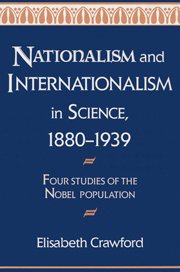
Nationalism and Internationalism in Science, 1880–1939
- Four Studies of the Nobel Population
-
- Published online:
- 06 November 2009
- Print publication:
- 28 February 1992

Rethinking the Scientific Revolution
-
- Published online:
- 25 October 2009
- Print publication:
- 13 March 2000

Innovation in Maxwell's Electromagnetic Theory
- Molecular Vortices, Displacement Current, and Light
-
- Published online:
- 24 October 2009
- Print publication:
- 31 January 1992

Science, Vine and Wine in Modern France
-
- Published online:
- 19 October 2009
- Print publication:
- 28 September 1996
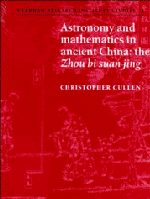
Astronomy and Mathematics in Ancient China
- The 'Zhou Bi Suan Jing'
-
- Published online:
- 16 October 2009
- Print publication:
- 18 April 1996
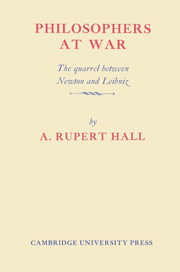
Philosophers at War
- The Quarrel between Newton and Leibniz
-
- Published online:
- 16 October 2009
- Print publication:
- 30 May 1980
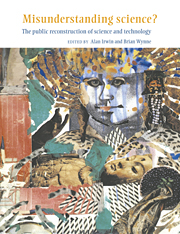
Misunderstanding Science?
- The Public Reconstruction of Science and Technology
-
- Published online:
- 16 October 2009
- Print publication:
- 29 March 1996
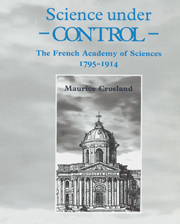
Science under Control
- The French Academy of Sciences 1795–1914
-
- Published online:
- 09 October 2009
- Print publication:
- 12 March 1992
Architects of Armageddon: the Home Office Scientific Advisers' Branch and civil defence in Britain, 1945–68†
-
- Journal:
- The British Journal for the History of Science / Volume 43 / Issue 2 / June 2010
- Published online by Cambridge University Press:
- 08 October 2009, pp. 149-180
- Print publication:
- June 2010
-
- Article
- Export citation
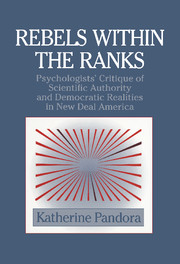
Rebels within the Ranks
- Psychologists' Critique of Scientific Authority and Democratic Realities in New Deal America
-
- Published online:
- 06 October 2009
- Print publication:
- 28 October 1997
Conjectures and reputations: The composition and reception of James Bradley's paper on the aberration of light with some reference to a third unpublished version
-
- Journal:
- The British Journal for the History of Science / Volume 43 / Issue 1 / March 2010
- Published online by Cambridge University Press:
- 24 September 2009, pp. 19-48
- Print publication:
- March 2010
-
- Article
- Export citation

The Great Barrier Reef
- History, Science, Heritage
-
- Published online:
- 22 September 2009
- Print publication:
- 08 November 2002
